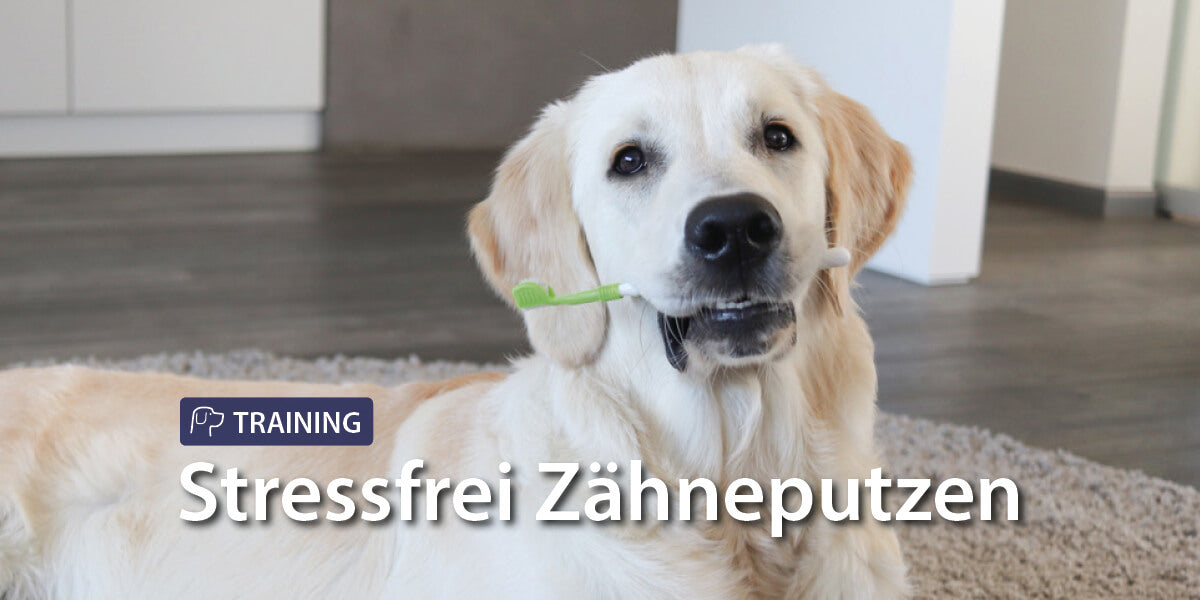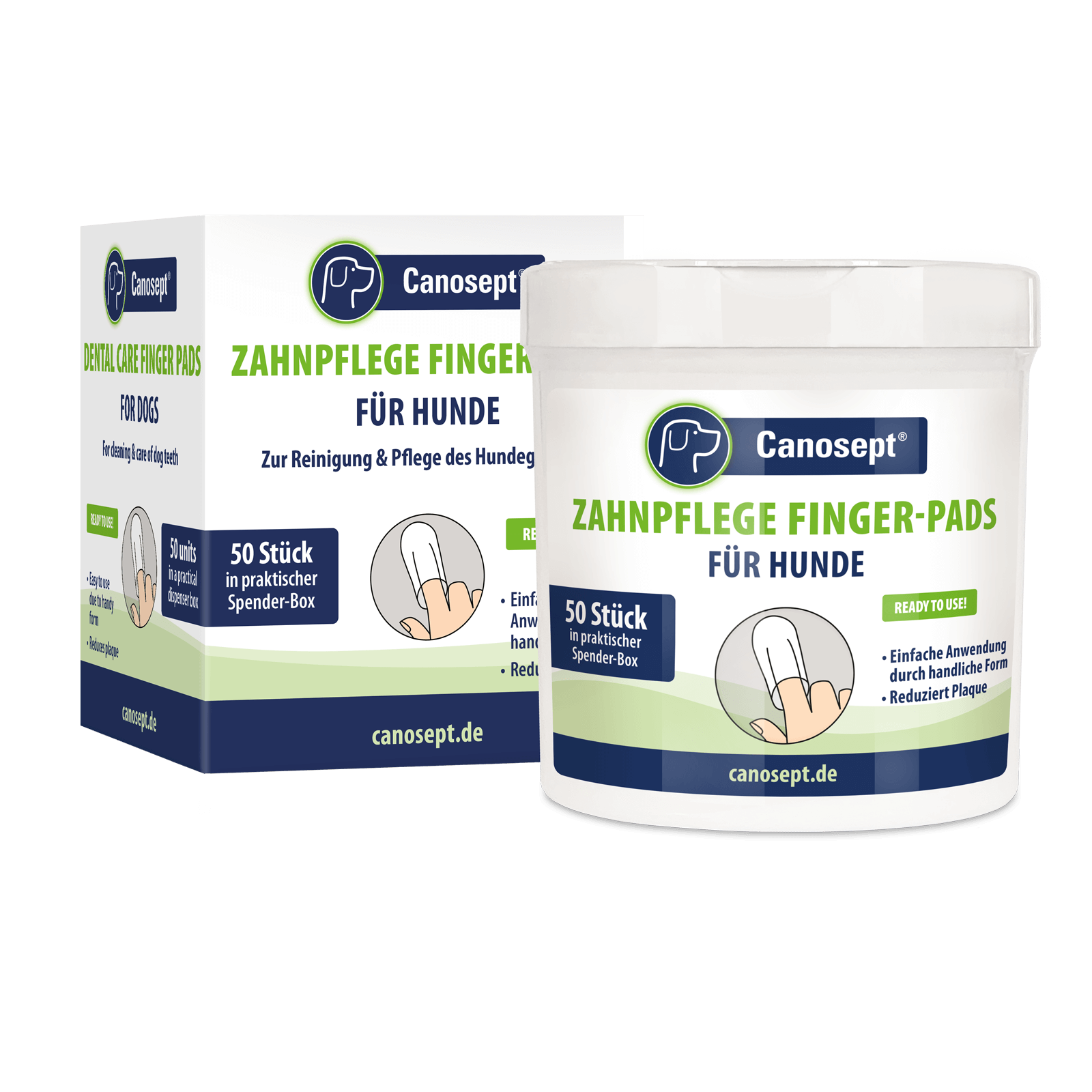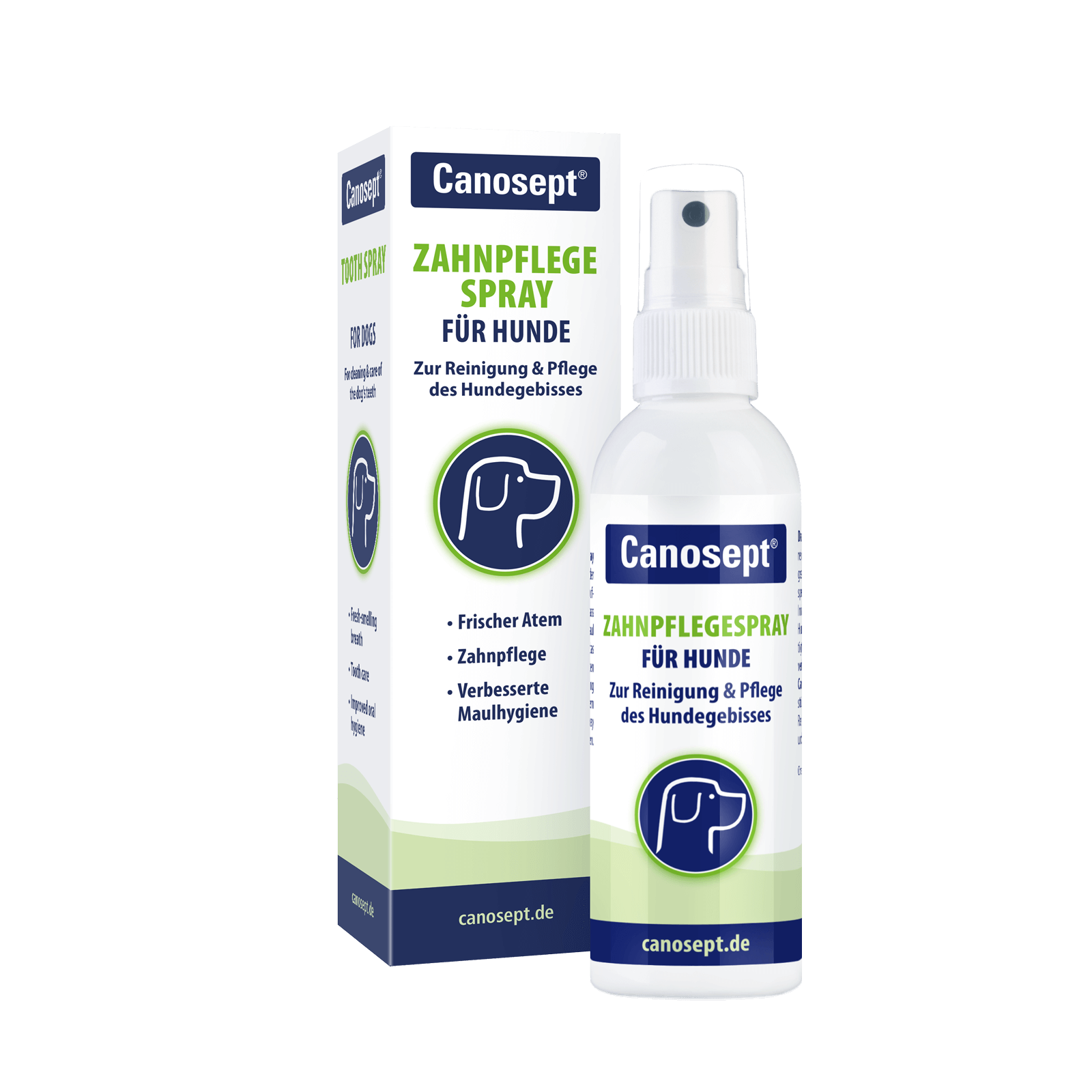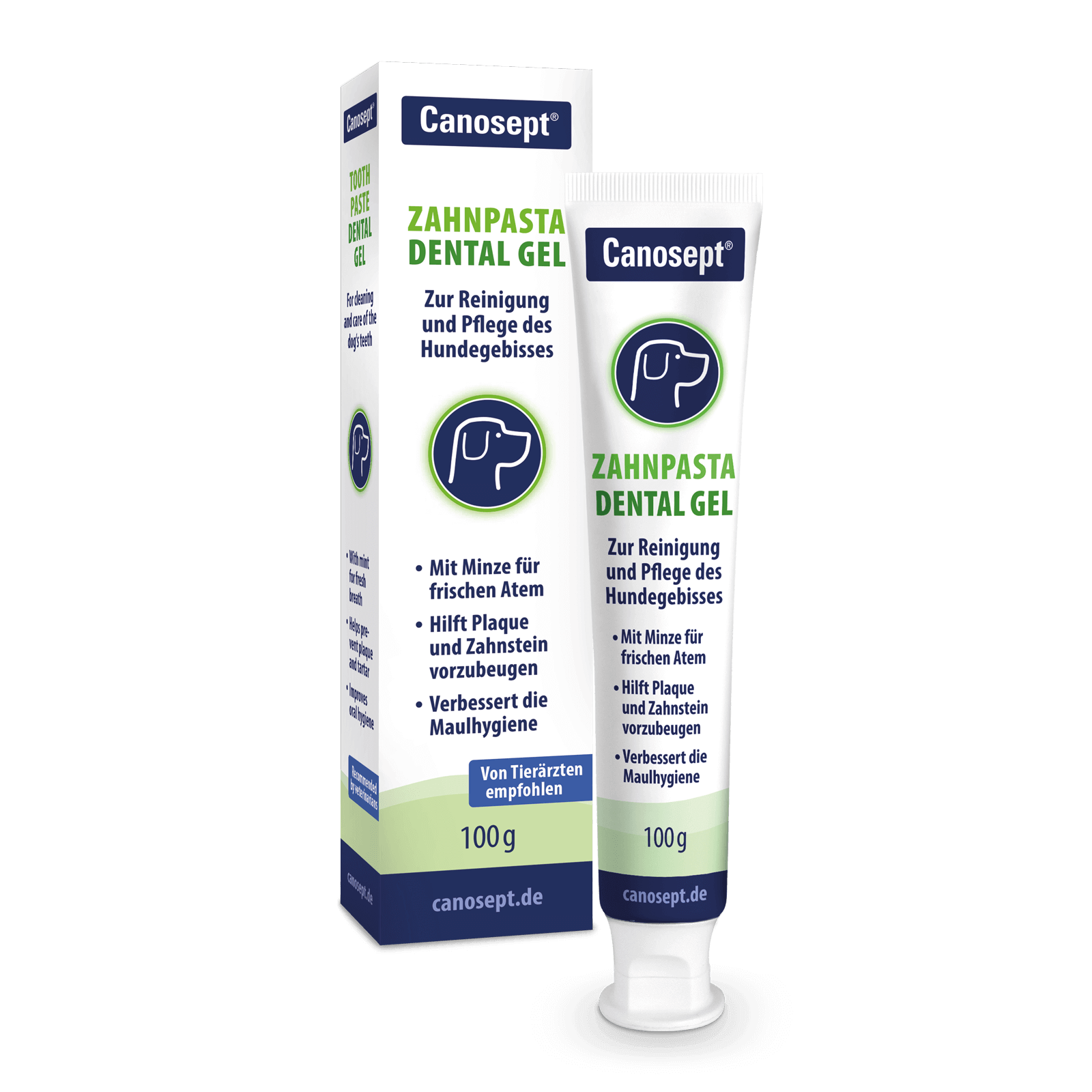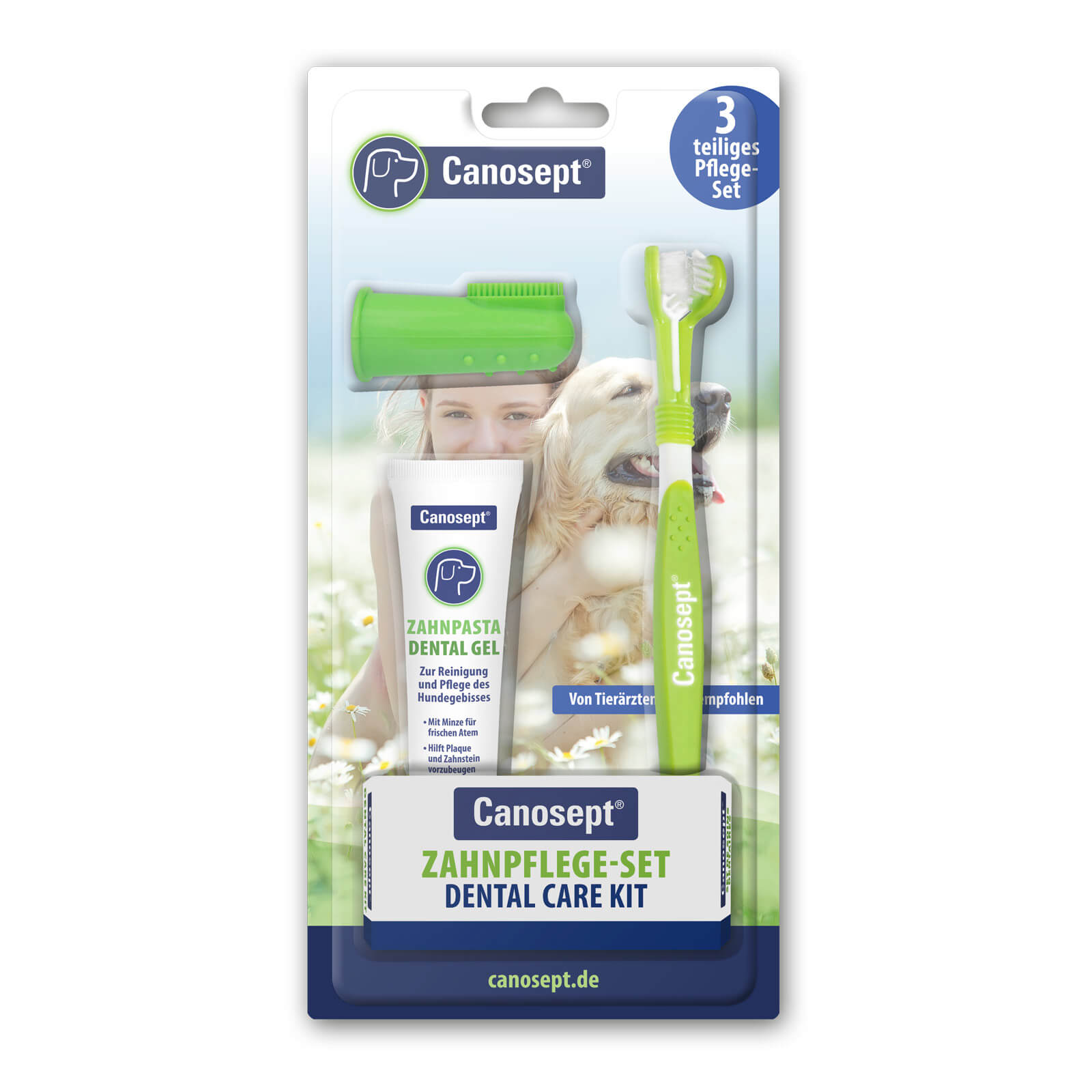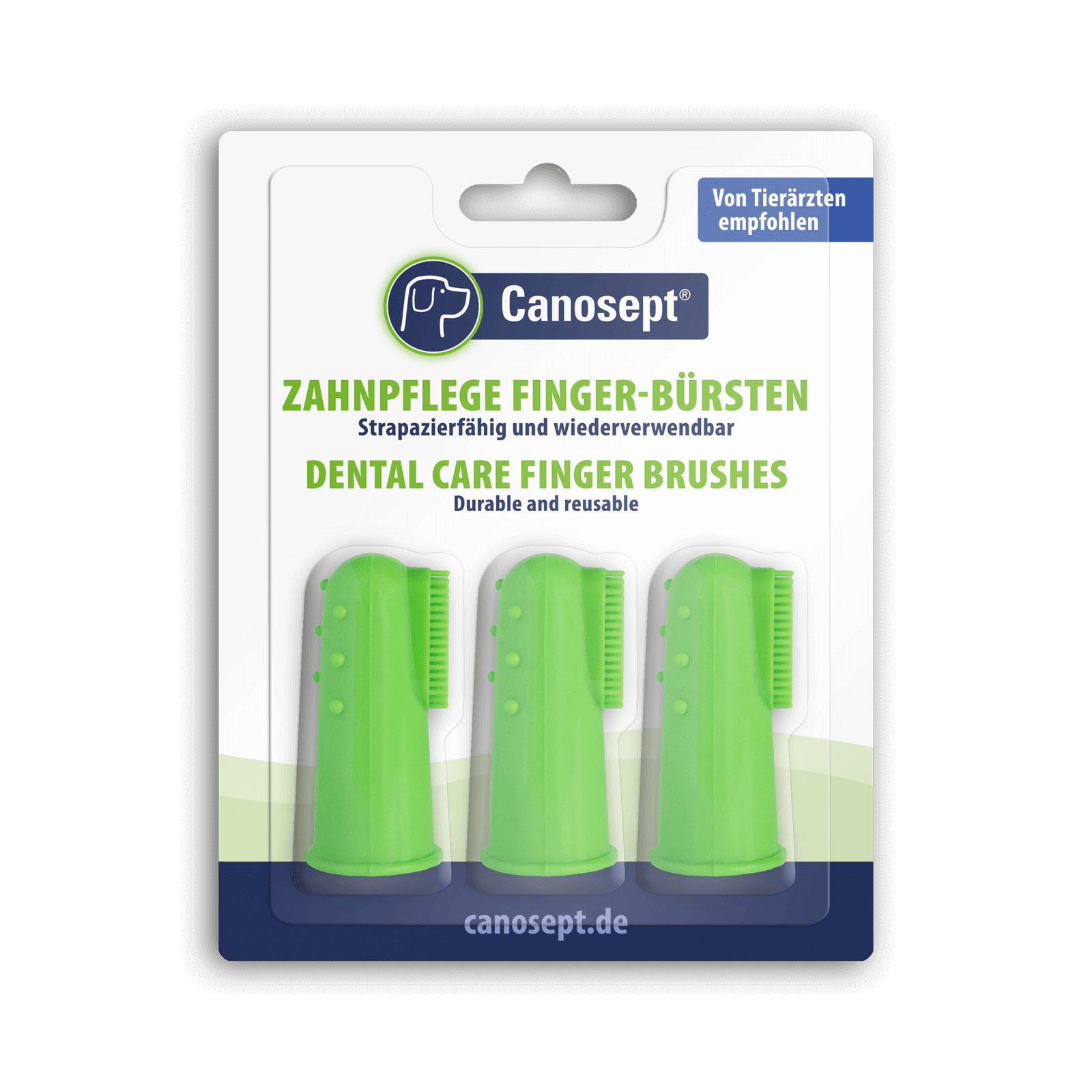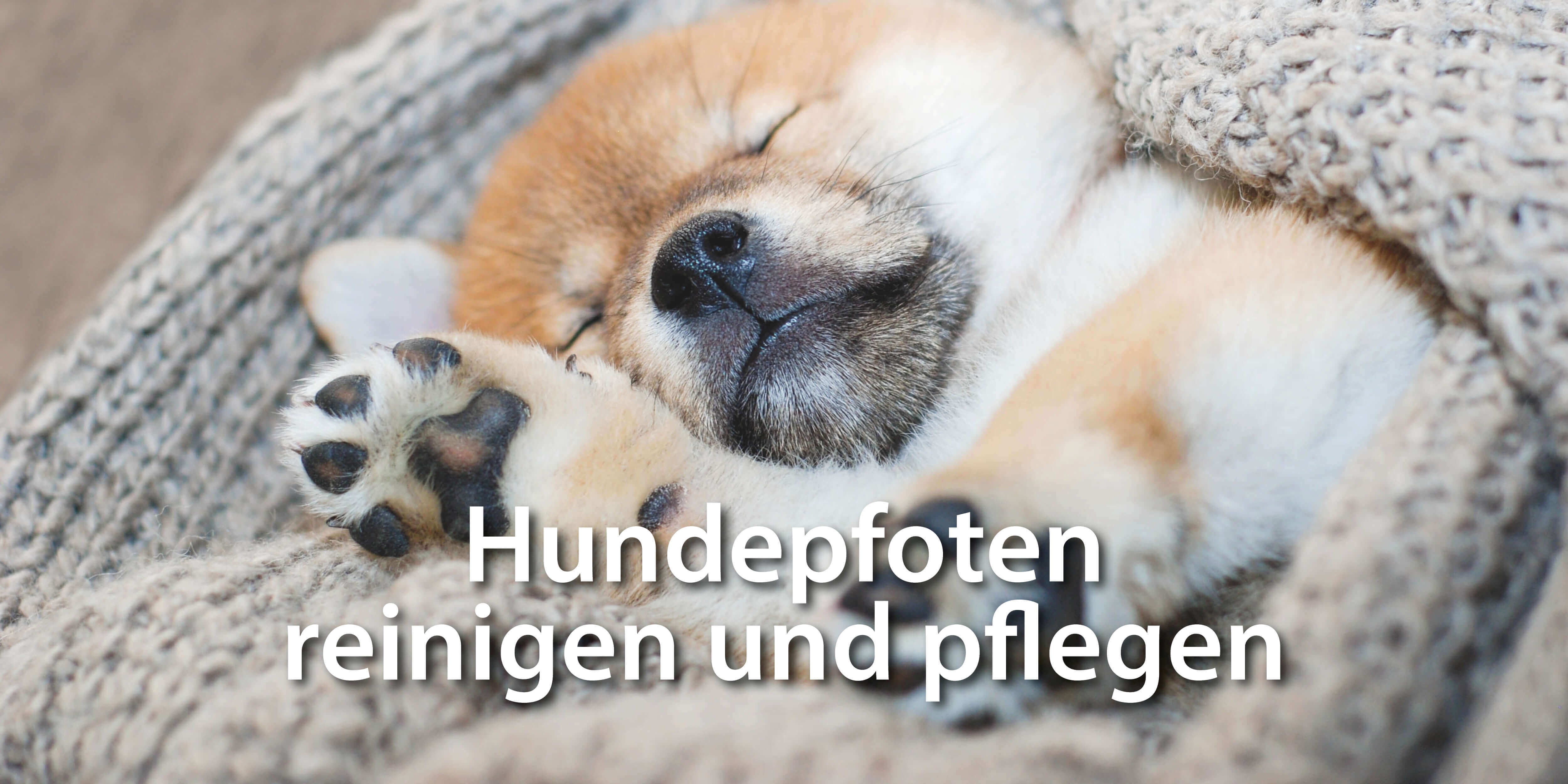- Why brushing your dog’s teeth is so important
- 1. Can dogs of any age learn to brush their teeth?
- 2. Practice using commands and touch
- 3. Getting used to brushing your teeth
- These products make brushing your teeth easier
Why is brushing your dog’s teeth so important?
Regularly brushing your dog's teeth is essential to protect them from unpleasant bad breath, tartar, gingivitis, and toothache. With the following tips, we'll show you how your dog can learn to brush their teeth from scratch, no matter their age.
Brushing your dog’s teeth – Tip 1: Can be learned at any age
To make brushing your dog's teeth a simple routine, you should get your dog used to it from puppyhood. During this time, you can approach dental checkups and care in a playful way. This way, your dog learns from the very beginning that it's normal for you to open his mouth or approach with a dental brushing utensil.
But don't worry, you can still get your older dog used to teeth brushing. You just might need more patience. Regular grooming sessions, whether daily grooming or dental care, may seem unpopular with our furry friends at first glance. In fact, regular grooming sessions promote the development of relationships and trust between humans and animals.

Brushing your dog’s teeth – Tip 2: Introducing a command
Before you start using the dental utensils, you should first familiarize your dog with the upcoming dental care by using a command. Examples include "teeth," "open," or "check."
Phase 1: Touch your dog's mouth
Start with touches and small strokes on the head so your dog knows it's okay for you to approach the mouth. Next, place one hand on the lower jaw and gently enclose it with your fingers.
Of course, don't forget to praise after each successful phase! At first, this can be done with treats. Later in training, you should switch to petting so that at the end of the habituation process, your dog has clean teeth and no treat residue between their teeth.

Phase 2: Open your dog's mouth
If your dog accepts this step, place your other hand on the bridge of his nose and gently cup it. Only when your dog agrees to your touch without stress can you gently open his mouth without applying pressure. Don't forget to praise him when the exercise is successful.
Constant repetition of the selected command
Repeat the selected command consistently. This way, your dog learns the connection between the command and the touch or "open" when opening the mouth. This not only makes brushing your dog's teeth easier, but also makes regular checkups at the vet a breeze.

Brushing your dog’s teeth – Tip 3: Slowly get used to brushing your dog’s teeth
Once your dog has internalized the command, you can begin getting him used to the toothbrushing tools. Important! You should repeat each of the following phases for several consecutive days before moving on to the next. Be patient and wait until your dog accepts each phase. Praise him again once your dog is patiently following along.
Phase 1: Getting used to the taste of toothpaste
Before brushing your dog's teeth, start by letting your dog lick a small amount of dog toothpaste from your finger.
Phase 2: Getting used to the touch of lips and teeth
During the second phase of getting your dog used to brushing his teeth, it's ideal to use a learned command, such as "Up." This lets your dog know that you're now touching and opening his mouth. With your finger, rub a small amount of dog toothpaste over the outer surfaces of his gums and teeth.
Phase 3: Cleaning the canines
In Phase 3, you begin the actual brushing of your dog's teeth. Before cleaning the canines, let your dog lick a little toothpaste off the toothbrush. Then, lift the lips with your thumb and index finger and gently move the toothbrush back and forth over the canines.
Phase 4: Cleaning the back teeth
Once your dog accepts the cleaning of his canines, slowly move on to the back teeth. During this phase, clean both sides of the mouth. With the Canosept 3-Head Toothbrush, this can be done conveniently in one step.

Phase 5: Cleaning all teeth
Only when your dog tolerates the cleaning of his canines and back teeth should you move on to the incisors. This order is necessary because the incisors are the most sensitive area. Is that working? Very well practiced! Now you can incorporate brushing your dog's teeth into your grooming routine.
Don't be alarmed: Many dogs involuntarily start to sneeze when their incisors touch.
These products make brushing your dog’s teeth easier
Every dog has different needs, which dog parents should adapt to. Age, breed, size, and behavior all play a role.
The Canosept range includes dental care products for every breed and age, making brushing your dog's teeth easier and faster for everyone.
The Canosept dental care finger brushes made of soft, BPA-free silicone are the perfect choice for the first brushing exercises and for small dog breeds for whom a normal toothbrush is too big.
Simply slip it onto your finger and you will quickly develop a confident feeling for brushing your teeth, even in difficult areas of your mouth.
The Canosept 3-Head Toothbrush is the product of choice for most dog breeds and all ages. It cleans all three sides of the teeth (front and back, as well as the chewing surfaces) in one action, significantly shortening the brushing time.
The practical Canosept dental care set contains everything you need for a relaxed start to brushing your teeth: the Canosept dental care finger brushes , the Canosept 3-head toothbrush , and the Canosept toothpaste dental gel, which is popular with dogs.

